The Church of Bones : Where people went to die
Sedlec Ossuary isn’t your average chapel that one might head to for confessionals. A Roman catholic church in the suburb of Kutná Hora in the Czech Republic, this fine altar to The Saviour might not impress upon its viewers a feeling of divinity, calm or redemption. Far from it, visitors are most likely to take back haunting images of deep set hollows staring at them from the bleached countenance of skulls – wherever they turn to. In what seems to be a grotesque testimony to art, the chapel is decorated with the bones of over 50,000 people who were interred here over the ages. There is a massive chandelier made entirely out of bones, skull candelabra, a coat of arms done up in bones, as well as strings of skulls and bones hanging from the ceiling. All in the name of art? Yes and no.
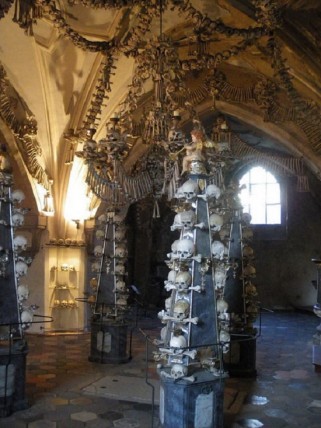
There are a few urban myths – one suggests a monk having gone mad and started to fashion things out of bones, while another talks of partially blind caretaker monks piling up bones into geometric shapes. While these theories may be questionable, there is little doubt that there was no dearth of skulls and bones at the Sedlec chapel.
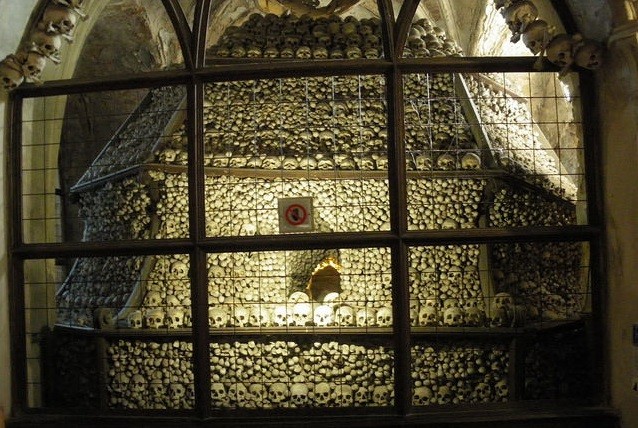
History states that an abbot from a monastery in Sedlec was sent to Jerusalem in the late 13th century. The good abbot, having made his visits, returned with some earth he had collected from a site right outside Jerusalem’s walls, where Jesus was supposed to have been crucified. He then proceeded to sprinkle it over the abbey cemetery, mighty pleased with himself at having bought back a handful of holiness from the holy land. The news soon spread, and the cemetery soon became a much sought after burial site throughout Central Europe. People from far bought family and relatives to be buried at the cemetery. The plague in the 14th century added to the growing woes of the cemetery, when large number of people afflicted with illness went to Sedlec to die, wanting to find their spot in the holy cemetery. The abbey cemetery soon had to be enlarged, to make room for the growing number of corpses. Around the turn of the 15th century, a Gothic church was built in the cemetery. The church had an upper level with vaulted ceilings and a lower level chapel that would serve as a ossuary – or a site that would house human skeletal remains. There was good reason to build an ossuary – the mass graves unearthed during the construction of the church had to be preserved, as did the older graves which had to be demolished to make way for new burials. The chapel soon began to find itself in possession of a large number of exhumed skeletons. The heaps continued to grow, and there was a need to bring some sense of order to the growing piles of remains that were accumulating.
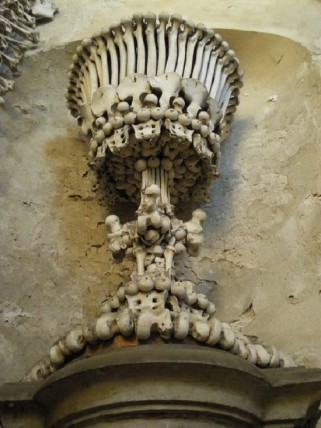
In 1870, a local woodcarver was commissioned to bring about some sense of order to the remains, and what came about as a result of that effort is today known as the Church of Bones. Over 50,000 human bodies were skillfully arranged by Frantisek Rindt, the carver, to transform the interiors of the interior of the church. From the outside, the chapel looks like any other – very ‘regular’. The interiors however can be quite startling to the average tourist, with skulls and bones decorating every nook and corner. There are gigantic chandeliers that are made out of every bone in the human body. The high arches of the ceilings are lined with skulls peering down with lifeless eyes. The entrance houses a coat-of-arms fashioned out of, well, more skulls and bones. The sight of skulls and bones adorning a place or worship, and the sheer quantity of bones that are stacked can be quite unnerving a sight. The chapel has served as inspiration for several movie shoots as well.
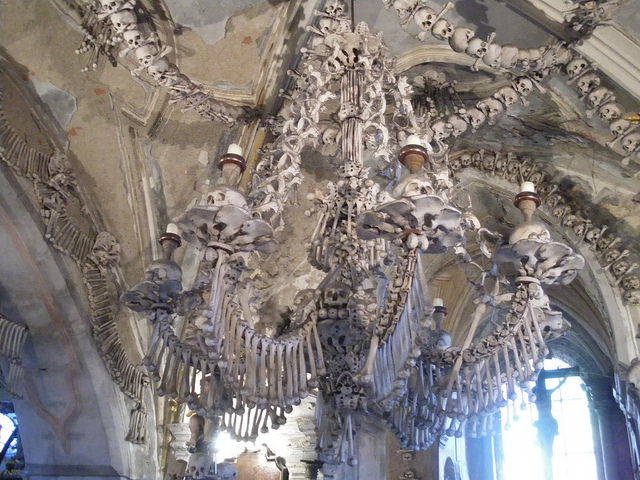
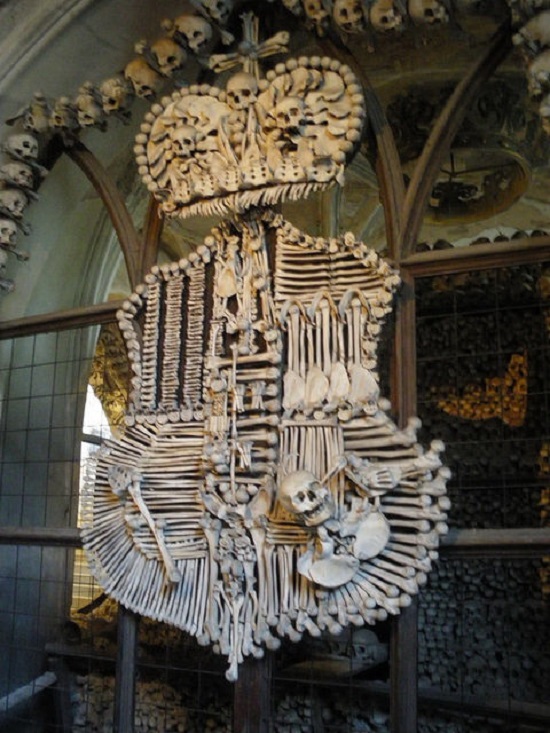
This one-of-a-kind location today attracts many curious tourists. Those interested can also purchase memorabilia that include skull models (of plaster) and key rings to accompany the macabre memories they will take home. The dead, it is said, tell no tales. The chapel however, has a lot of stories to narrate.
(All images courtesy: sedlecossuary.com)
Also Read:
5 forgotten monuments you must visit when you are in Delhi
Pune and its ghosts: Are you brave enough to visit these 5 haunted places?

OMG-inducing, share-compelling, like-attracting, clutter-breaking, thought-provoking, myth-busting content from the country’s leading content curators. read on...
